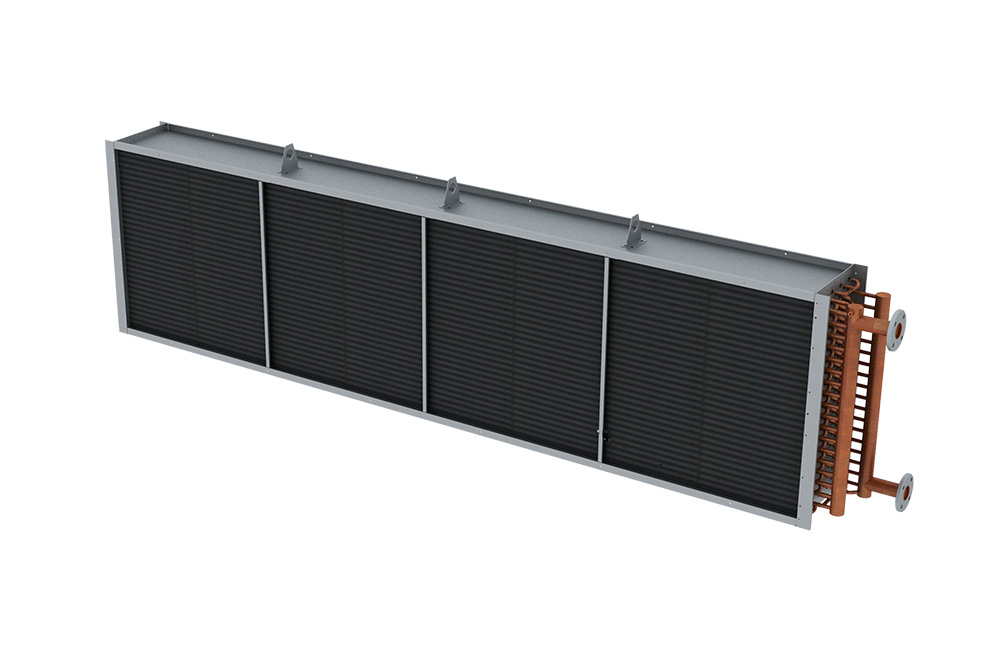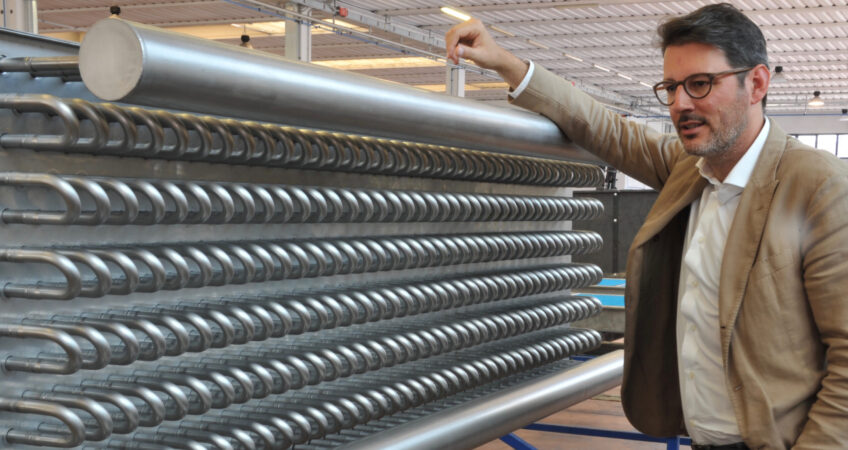When is it appropriate to take into consideration the use of a stainless steel exchanger?
- Internal Corrosion Risk (tube) due to the use of process fluids such as:
- Demineralized water for industrial applications;
- NH3 (UnitCoolers);
- Special fluids such as nanotechnological glycols.
- External Corrosion Risk (tube and fins)
- for environmental reasons or industrial markets with a corrosive environment, food industry: fish or cheese cold rooms;
- for aggressive sanitizing washings;
- for continuous passage of water as for hydrocooling applications;
- Temperature reasons (air temperatures below -40 ° C)
ThermoKey has been producing finned pack heat exchangers in stainless steel since 1995.
These are used by ThermoKey for its dry coolers, remote condensers and unit coolers and by Original Equipment manufacturers (OEM)
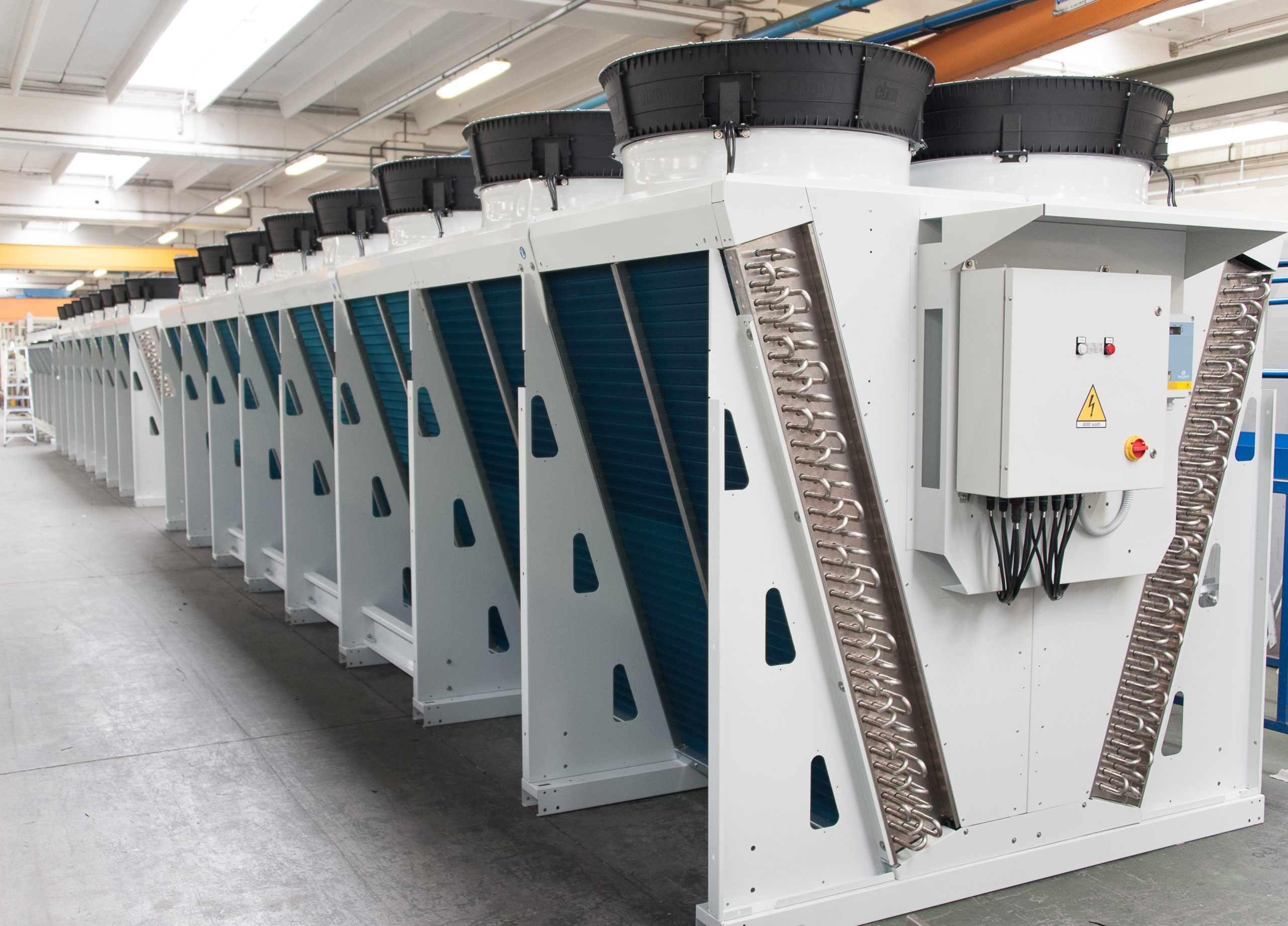
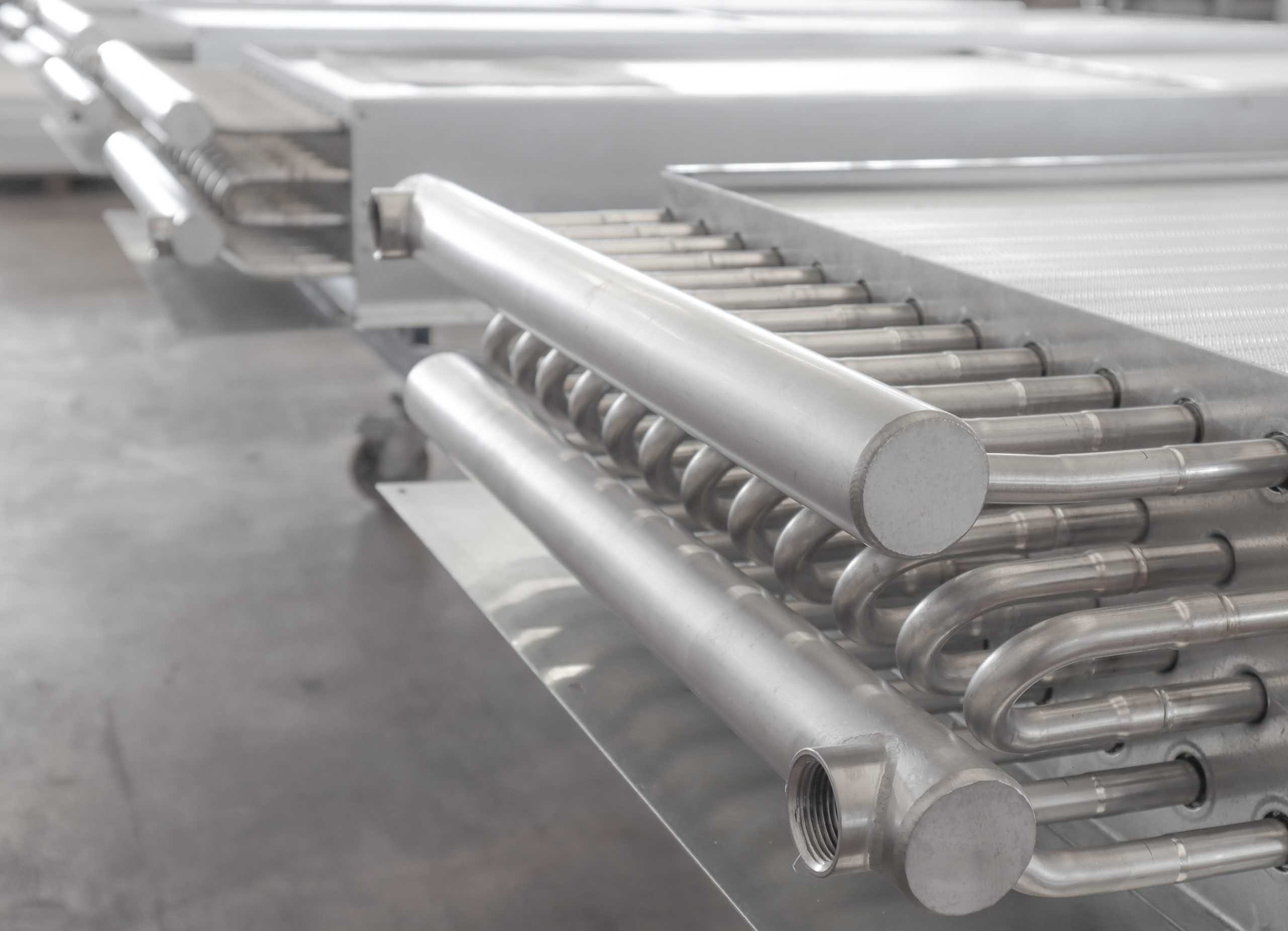
Customized solutions
A heat exchanger must provide the correct thermodynamic sizing and construction that depends on the intended use.
ThermoKey stainless steel heat exchangers can be made with certified AISI 304 or AISI 316L tubes and casing.
The finned pack of the stainless steel coil tubes can be in AISI 316L, Aluminum Magnesium, Aluminum, Hydrophobic Blue and Double Layer black or other coatings depending on the environment of use.
The fins spacing is also an important choice parameter (from 2.1mm to 6mm) depending on the applications.
ThermoKey stainless steel heat exchangers can have a finned pack length from 0.5 to 12 meters, with standard sections from 8 to 47 tubes and from 4 to 10 rows.
Using our in depth know-how and advanced thermal software, we are able to advise on the best solutions in order to achieve optimal thermal properties and pressure drops.
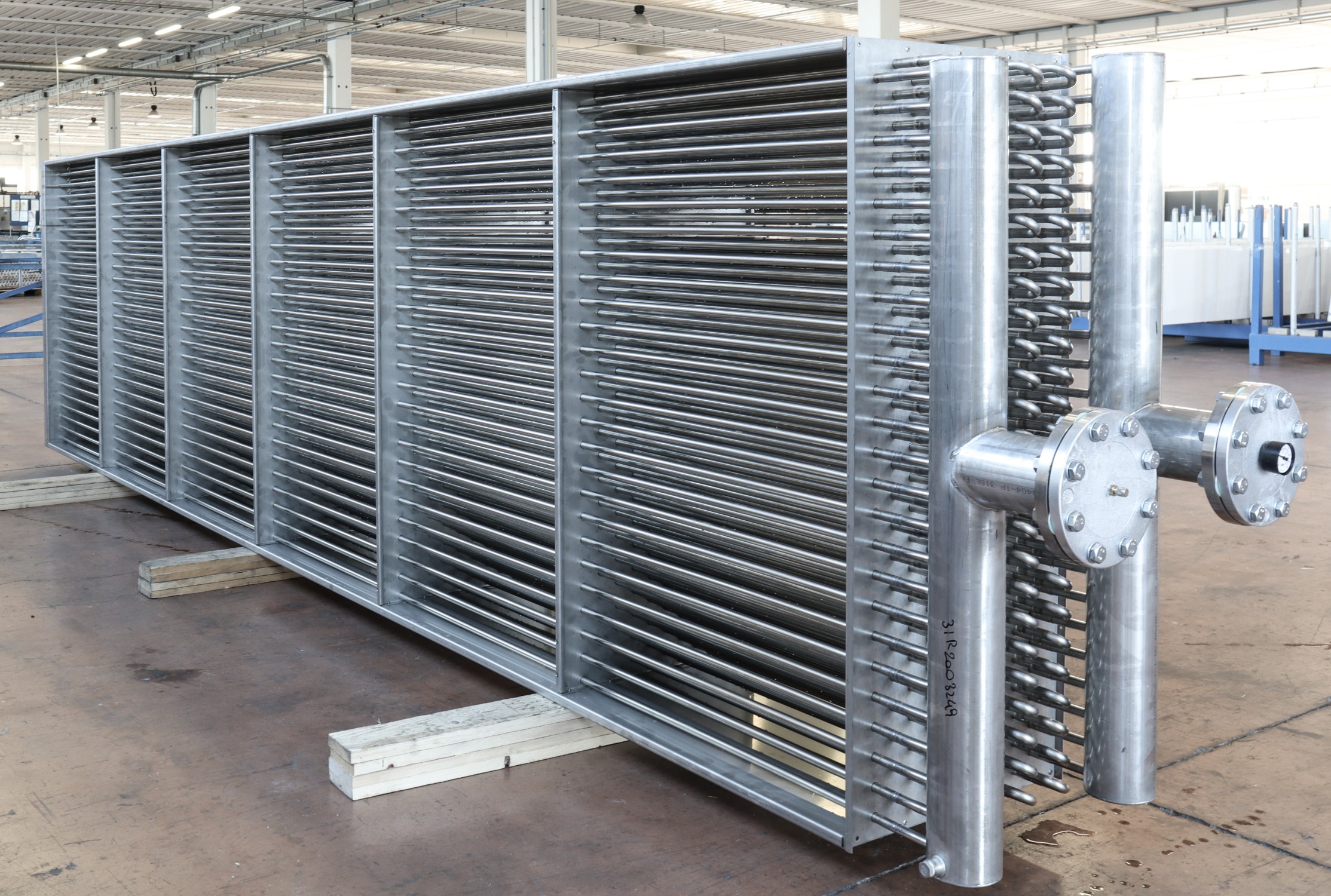

Quality for reliability - minimizing the risk of operating losses
The quality of a stainless steel coil passes through the quality of its materials and its welding, which must be done:
- using generators and semi-automatic orbital TIG welding torches – to guarantee quality and repetitiveness of the process.
- With controlled atmosphere welding (argon) – both externally and internally the circuit – to avoid oxidation.
- With “butt” welding without tube-return bends or tube-manifold interstices. No dirt and no risk of ice formation between the tube and the return bends with the consequent risk of loss.


